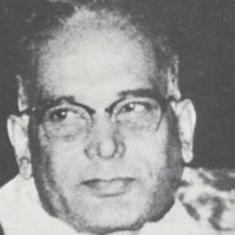The piece is currently mounted as an eight-channel video installation at the Kiran Nadar Museum of Art in Noida, as part of a larger exhibition titled Is It What You Think?, curated by Roobina Karode. The film uncovers and examines the recurring violence against women in India, across the boundaries of caste, religion and region.
Kanwar’s documentary was made over four years, from 2003. This allows it to present the viewer with a significant span of brutality, but manages to showcase also the strength that is needed to heal and recover after the experience of such violence.
Disturbed by the open celebration of violent acts of rape and carnage by some communities in Gujarat in 2002, he began research. Besides the news reports of the attacks, there were CDs of witnesses to these incidents. “There seemed to be public approval of the sexual attacks of 2002,” said Kanwar. “Attacks that were justified, accepted or celebrated by some people. We have unfortunately learnt to live with violence but this kind of celebration was hard to understand or accept.”
Kanwar began putting together news reports from across the country relating to public humiliation and sexual attacks against women. He was shocked by the number of incidents and their spread across geographical and political boundaries.
Immersion
The narrative is distributed across eight large screens and challenges the viewer with piecing together the various recounting of violence. This creates an immersive experience: the viewer is surrounded by voices, text and visuals and is confronted by a roundly told tale rather than one expedient story told to a passive audience.
Where some images scream their anguish at you, others are silent in reconciliation; some are poignant and poetic while others horribly disturbing. It is perhaps the silences that become most unsettling.
“One of the first things that struck me while researching was that the narrative around sexual violence, especially sexual violence in political conflicts, seem to submerge and disappear,” observes Kanwar. “In many ways they have valid reasons for disappearing because you want to carry on. You don't want to talk about it, you have children, there are fathers/husbands. Women often have to protect themselves and their family from future attacks.”
Submersion
While making the film, which was totally unscripted, Kanwar found that the silent narratives hadn’t disappeared but been submerged. He discovered multiple ways of archiving and recalling this trauma.
During his travels from Manipur and Nagaland to Khairlanji and Gujarat, Kanwar encountered different ways in which women and communities have archived and recalled trauma and pain. “I did not want to meet survivors and ask them to recount their experiences,” he said. “So in a way I entered a terrain of multiple vocabularies of remembering and subsequently of going beyond it as well. Essentially I wanted to find a way to comprehend.”
For the segment on Khairlanji, a village in Maharastra where in 2006 the men of a Dalit family were murdered and the women paraded naked and reportedly gang-raped by members of the politically powerful Kunbi caste, Kanwar decided to use a different technique to recall the incidents. Animated drawings on a still image of a variegated landscape appear and disappear – two bicycles, scattered books, a child’s rendition of a house.
It is important to note that Kanwar’s comment as an artist is also critical of the mainstream media’s sensationalist, often insensitive approach to covering sexual violence and death. After Khairlanji, there was immediate controversy over a journalist who had posted images of the victim’s naked bodies. Kanwar searched for another way to talk about Khairlanji and its pain.
The film also searches for historical context, underscoring the recurring nature of sexual violence, going back to Partition. It presents the viewer with archival still images of activist Mridula Sarabhai and a tiny clip of Sarabhai and Mahatma Gandhi together. Kanwar’s interest was to not just capture Sarabhai alongside the Mahatma but also the way she stood or folded her arms.
The Lightning Testimonies is a delicate yet searing account of the times of crisis that we live in: lighting burns anything in its way, it is powerful, there is darkness after it but it remains in the mind long after.










